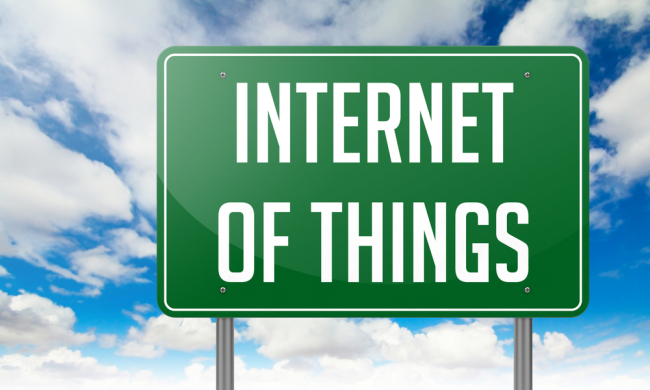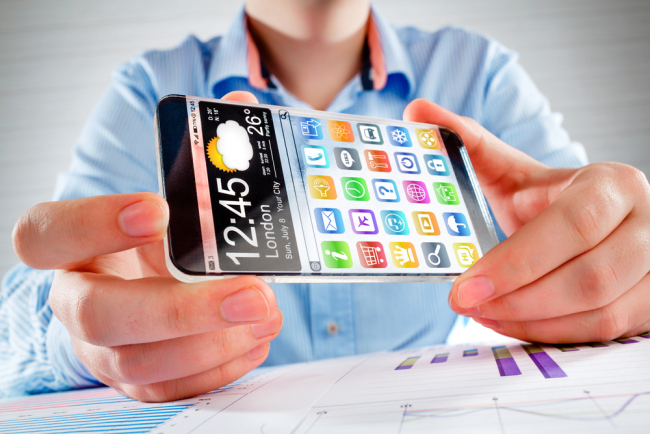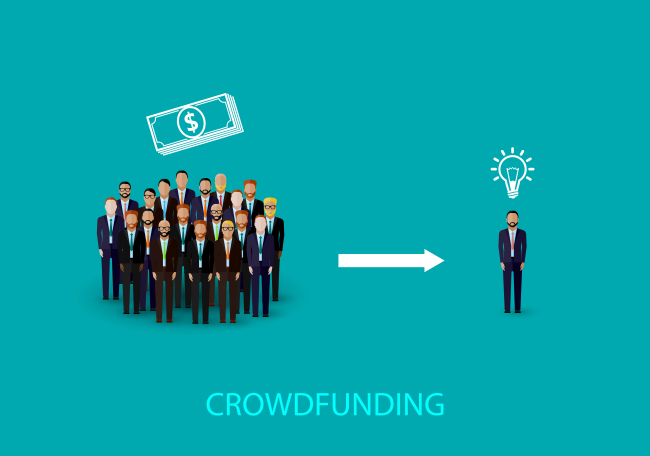Silicon Republic’s John Kennedy gazes into his crystal ball (and reservoir of insights and hunches) to give you an idea of what to expect in 2015.
The year 2014 was eventful for technology, with the seemingly never-ending expansion of the digital economy in full flow.
Apple hit a US$700bn market cap as demand for its iPhones continued unabated, Facebook reached 1.3bn people (80pc by mobile), Uber reached a US$40bn valuation despite a ridiculous slew of scandals and man’s mission to reach the stars took a giant leap forward following the successful Orion launch.
It was also a big year for security, with hackers on the rampage taking out Home Depot and Target, and ending the year with a bang with a spectacular and devastating attack on Sony Pictures Entertainment.
But as we enter 2015, anything can happen. Good and bad. Apple is poised to launch a new form factor – the Apple Watch – and the wearables revolution will be in full swing. But the rising valuations of a few big-league tech names places a scrutiny on many of the smaller bets venture capitalists have taken on start-ups and the world will ask itself, how many me-too apps do we need? Could it be carnage and what will we be left with when 2015 comes to an end?
An Apple Store for Ireland?

Apple Store image via Shutterstock
I have no particular reason to believe that there will be an Apple Store coming to Dublin or Cork in 2015 or 2016, except a conviction that it is about time.
Apple and Ireland have a shared history that goes back to the early 1980s, when Apple was just a start-up and a 20-something Steve Jobs used to terrify manufacturing managers with piercing questions about yield and output.
In the past year or two, Ireland and Apple have weathered EU scrutiny over tax affairs and Apple CEO Tim Cook has found time to drop in for a cup of tay and say hello to the troops up in Holyhill, Cork.
With more than 3,000 people and growing, Cork is still a major spoke in the Apple wheel.
So why an Apple Store for Dublin or Cork? It would fit right in. Heck, we already have Gap and Abercrombie & Fitch. Irish consumers love Apple products and the iPhone and MacBook Air are as much status symbols as they are gracefully designed gadgets.
Dublin is one of the few capital cities in Europe not to be graced with an Apple store and with the economy apparently returning to growth, an Apple Store would do quite nicely in Dublin, particularly. Spending power is on the up.
I’ve even been scouting a few locations. I checked out Apple Stores in San Francisco and a pretty nice one in Charlottenburg in Berlin this year and realised that in terms of scale these stores would fit right in back in Dublin with its nice stone Georgian facades.
The GPO will be booked out for obvious reasons so don’t expect a Louvre or Grand Central-style Apple Store tucked in the corner there. But I was thinking either Dawson Street or Dame Street in Dublin would be ideal for nicely sized Apple Store. The old Houses of Parliament opposite Trinity would also be an awesome location, but Bank of Ireland would probably have to be consulted. And then again I’m sure NAMA has a few attractive options around St Stephen’s Green.
Dublin is a city with a long tradition of literary geniuses and bars. It’s time we had our own Genius Bar.
Internet of things becomes a thing

Internet of things image via Shutterstock
Thing. It’s a dreadful word to describe probably the greatest advance in technology since the PC became a thing, Wi-Fi became a thing, and the smartphone became a thing. But there it is. We call it the internet of things, but the mash-up of wireless sensors, machines and the internet into a connected organism of 40bn devices is becoming a reality unfolding before our eyes. Anything is becoming possible – wireless controlled lightbulbs, thermostats, smart fridges, you name it.
What the internet of things lacks is real substance but that will change in 2015. Intel has already got the ball rolling with its attractively named Intel IoT platform, which has security at its core. Apple has also made a stab at it with its HomeKit and HealthKit technologies.
Expect others to follow suit in 2015 with effective operating systems for the internet of things being launched, namely by Microsoft, which has been unusually coy about its intentions in this area, and Samsung, which acquired SmartThings this year.
The internet of things will move from fad to thing in 2015.
Glass may be broken, but it will be fixed in an industrious way
.jpg)
Google Glass image via Shutterstock
Speaking of fads, Google Glass began 2014 bravely but ended on a whimper with Google quietly closing four Google Glass stores in the US and the UK. Glass simply failed to become the mass consumer phenomenon it was supposed to be before it even had a choice.
Geeks with cash wore them with glee and became maligned as Glass-holes, while people scared about their privacy attacked people in bars in San Francisco who were wearing the distinctive eyewear.
I don’t think Google is going to give up the ghost of Glass becoming a popular consumer device and obviously wants to work with fashion brands to make geek chic (tech is the new black, after all) but there is an obvious area or two being overlooked; verticals, industry verticals.
Why on earth isn’t Google trying to make Glass useful in various industries, such as healthcare, where doctors can remotely instruct emergency workers or surgeons, industrial applications, where designers can communicate with engineers, or law, where police officers can have devices that can both record incidents and send information to officers on the spot?
Technology history has always taught us that today’s technologies began as yesterday’s industrial or military innovations – the internet and mobile phones are a case in point. Google just went about it from the wrong direction. It could take Google Glass a long time to be as accepted as Android or iPhones today, but Google could be on to a nice earner if it solves vertical problems first.
Already Google has begun working with Intel to provide the brains of the next Glass model, but Google could also solve real-world issues with its Glass technology.
Telecoms consolidation

Strategy image via Shutterstock
The telecoms world is one of big bets and lost opportunities. It’s the quintessential gamble of putting money in at the right time, backing the right horse and getting out when the time is right.
The year 2015 will be one of seismic change in the telecoms world, as operators vie for relevance and technological advantage. Two words: quad play.
Operators around the world will strive to offer phone, broadband, mobile and TV services as they realise that fighting on these four fronts offers the best chances of long-term customer retention.
This realisation is causing BT to consider buying back its former mobile division O2, which it sold to Telefónica in 2005 for stg£18bn and it is also looking at potentially acquiring Everything Everywhere from Deutsche Telekom and France Telecom if it can’t get O2.
My prediction is BT will get O2 because many of the management teams in both companies worked together in the past and will work well into the future, it’s a cultural fit.
My next prediction is Everything Everywhere is likely to be snapped up by Hutchison Whampoa, which is eager to grow, having acquired O2 in Ireland this year for around €850m.
My next prediction affects Liberty Global, which is at a bit of a strategic impasse. Despite having invested heavily in deploying advanced cable broadband in many countries, including Ireland, the challenge is to move on to the next generation of DOCSIS (Data over Cable Service Interface Specification). Does the current leadership have the appetite to make that investment or would it be interested in cashing in its chips?
The timing could be perfect because Vodafone is sniffing around Liberty Global, with a view to buying the company.
My bet is Vodafone will make a meaningful push to buy Liberty Global, which owns UPC in Ireland and Virgin Media in the UK. For Vodafone this would solve the quad-play conundrum in one fell swoop, giving it access to vast tracts of fibre-connected premises in Europe, the US and Asia.
Vodafone has the ambition – and the deep pockets – to capitalise on the quad-play opportunities.
PCs become fashionable again and budget phablets will eat into tablets

Phablet image via Shutterstock
Two years ago we all thought that the personal computer was dead. Ultra-mobile tablets would make ownership of a clunky notebook irrelevant. But if anything there are signs that PCs are selling well again, mainly because many of the devices, such as the Microsoft Surface and Apple’s MacBook Air (which doesn’t like to be referred to as a PC), have maintained their usefulness.
Tablets can’t do everything. They are great for consuming content and doing some productive things, but ultimately technology has shown us that we still need our big screens and keyboards to get stuff done.
Apple itself has done more than anyone to show that computers are still cool, most notably with its Retina 5K iMac in October.
While tablet computers are going to remain a firm fixture in computing for a long time to come, they are going to come under threat from large-screen smartphones, such as the iPhone 6 Plus or the Samsung Note 4 Edge, also known as phablets. Already there is evidence Apple is selling fewer iPad mini devices because of the iPhone 6 Plus.
Where this will get particularly interesting in 2015 is the damage that budget phablet devices from manufacturers such as Lenovo, Xiaomi and others will do to the tablet market in 2015. Most vulnerable will be the Android tablet makers, LG, Sony, ASUS and Samsung.
Europe and the US will see makers such as Xiaomi – smarting from its exit from India – and Lenovo, which now owns Motorola Mobility, swarm into the breach.
Funding, valuations and IPOs

Wall Street image via Shutterstock
Will it go pop? That’s the question everyone asks when you hear about companies such as Uber becoming valued at US$40bn, for example. The thing is, technology is here to stay. The difference between the dot.com bust of 2000 and the realignment that may come in 2015 is infrastructure. In 2000, there were unproven ideas but no broadband, no 3G and no 4G.
Could you imagine what would have happened if the founders of YouTube tried to create YouTube in 1999 rather than 2005? It just wouldn’t have been and someone else would eventually have come up with the idea when the infrastructure was there to support video to consumers.
Uber is on track to create 1m driver jobs worldwide next year. In Europe, there are more than 700,000 IT vacancies and technology is becoming more and more hardwired into our lives.
If there is a correction it may happen before companies such as Uber or Dropbox have had their day on the markets, which is highly likely in 2015.
If there is a correction, it won’t really affect established giants such as IBM, Microsoft or Apple, who breezed through the last tech downturn because they are hardwired into the world’s tapestry of infrastructure.
If there is a correction, the massacre could occur in the early stages of the market, among start-ups principally, as venture capitalists would rather not have their cash tied up in me-too or vague or risky ideas, but would rather make sure their cash is free to participate in Uber’s round. This will create pressure at the seed funding and follow-on investment part of the market.
If there is a correction …
Money makes the world go round

Crowdfunding image via Shutterstock
But money makes the world go round and no one better than a start-up knows this. 2015 will be a year that will see crowdfunding become a firm rite of passage that venture capitalists will require most of their future prospects to experience as a rational way of testing the market and observing leadership discipline.
We’ve already seen this occur even within giant tech companies like Sony with a team of R&D engineers bringing an E-Paper watch to the crowd markets to assess demand and bolster product development.
While this may not seem as easy a route as simply getting A, B and C rounds, it is in all probability a better and more rational way of doing things. The investment rounds can still be there, but it is a good way for venture capitalists to test not only the products they are investing in, but the people they are investing in too.
Data literacy becomes the prerequisite for employment
.jpg)
Big data image via Shutterstock
At present computer literacy is essential even if you pack supermarket shelves.
The current generation of school leavers and college graduates are digital natives, the rest of us born before 1986 are digital immigrants. They are savvy, they know apps, but few can code.
That will change. But not every kid can be a coder. What they will need to become expert in, however, is manipulating, extrapolating and sharing data in such a way as to arrive at decisions fast.
Tools like Tableau for visualizing datasets like databases will become commonplace as Word, PowerPoint or Excel in the coming years as workers will be expected to expertly sift through vast quantities of data and have reports and presentations ready in moments rather than hours or days.
Homeshoring: the new workstyle for Ireland
.jpg)
Rural broadband image via Shutterstock
A revolution in what we consider work will happen in Ireland as investments in fibre spearheaded by Eircom, Vodafone/ESB and of course the Government will change the fabric of the country.
The key here is economic and social advantage. At present hundreds of thousands of people in the commuter belts of Ireland leave their counties to work in Dublin, Cork, Limerick and Galway.
Businesses in start-up mode often choose to locate in cities in order to compete for talent or investment rather than stay in their home environment, which could be Sligo, Mayo or Wexford, for example.
But if these investments take hold and suddenly rural areas have fibre the equivalent or better than the bigger cities then what we perceive as enterprise could be transformed, leaving more money to be spent in local economies.
First off, people who drive to the city each day can work from home some of the week or all week if they choose.
That’s one aspect. But imagine if businesses instead of building call centres decided to allocate work to people who are free for part of the day. Parents who have dropped their kids off to school or people that are semi-retired and who have decent broadband connections and who can be able to work part-time, perhaps four to five hours a day doing customer service work, for example.
This has the bonus of alleviating unemployment, increasing the spend in the local economy and improving the economic wellbeing and social life of entire communities. That’s one aspect of what fibre will deliver.
Already tech companies such as Amazon and Apple will only consider people in Ireland applicable for certain new jobs in their companies if they have broadband at home of at least 8Mbps to 10Mbps. Within two years hundreds of thousands of homes win Ireland will have 1Gbps speeds which can be used to do more than just watch movies on Netflix.
It’s called home-shoring and it’s a wave that will crash on Irish shores sooner than you will believe.
Top image of crystal ball via Shutterstock